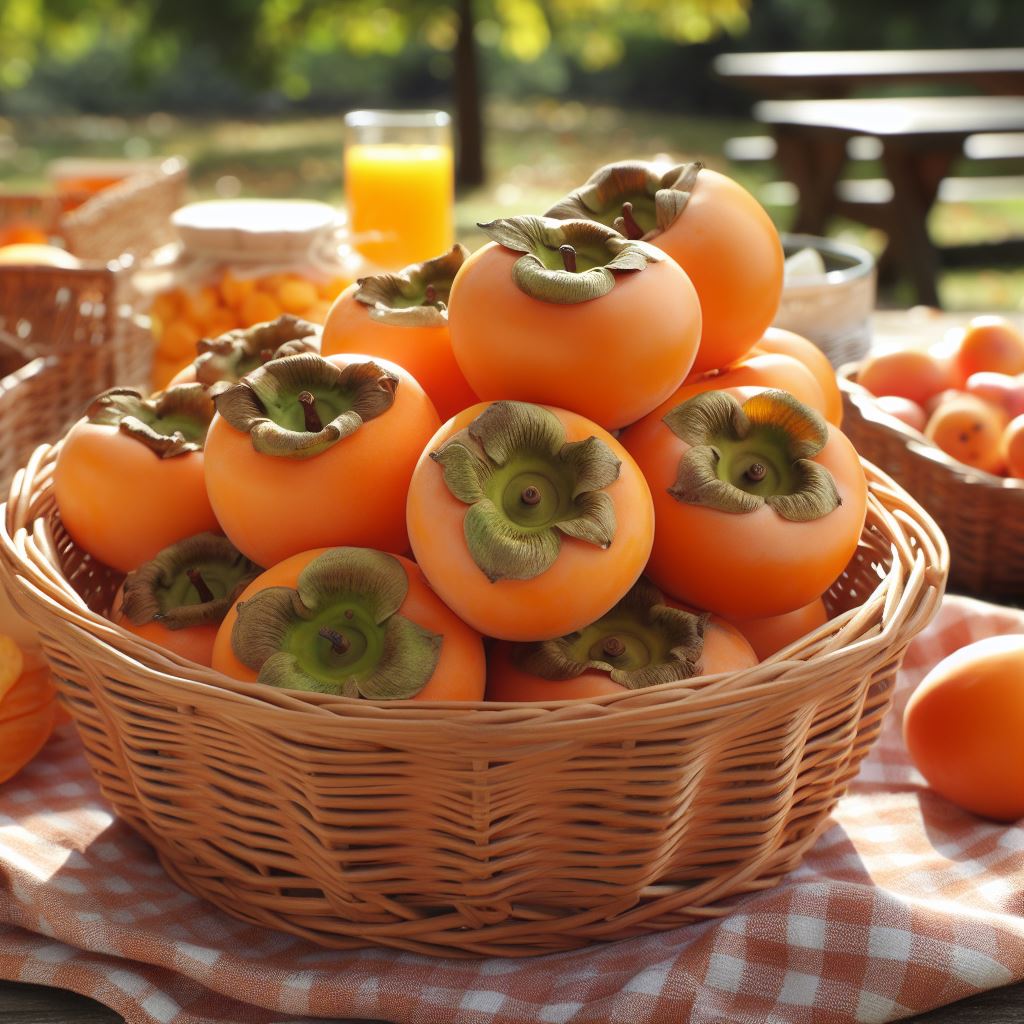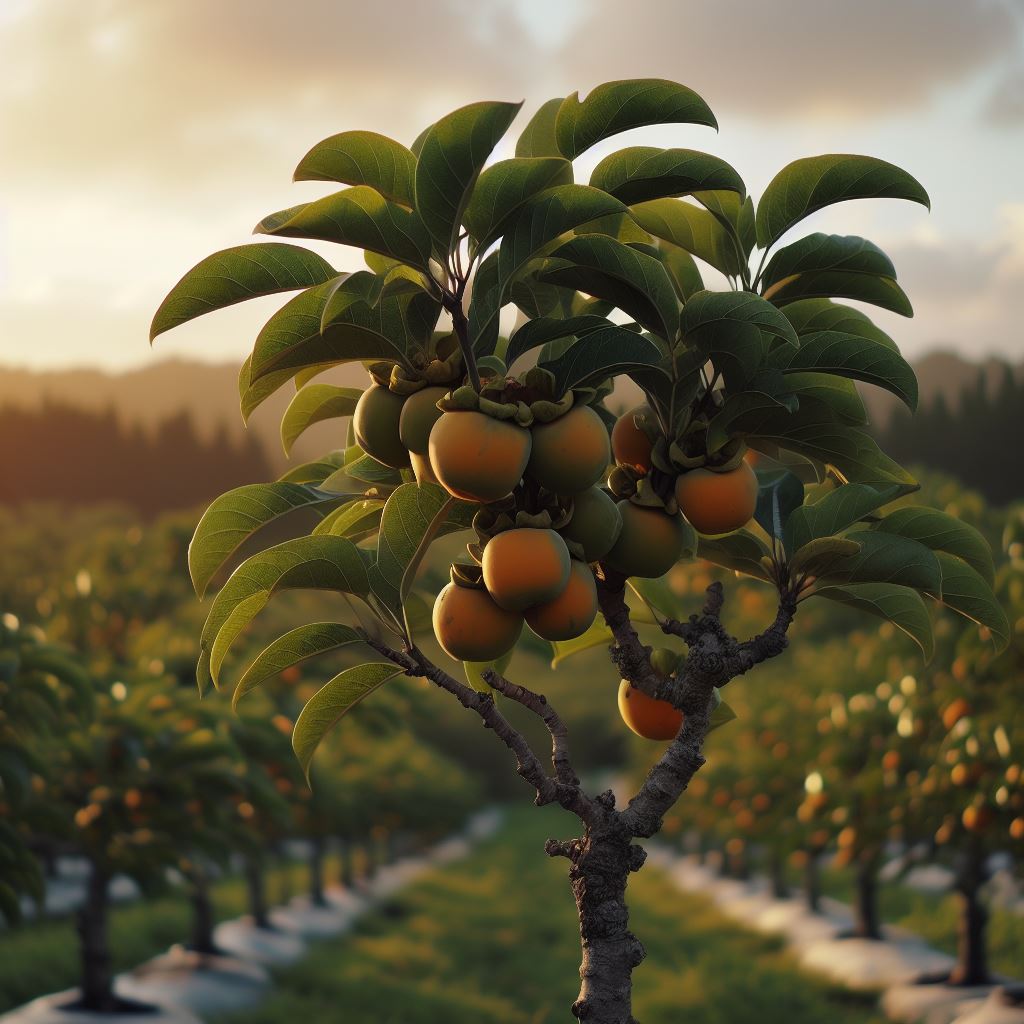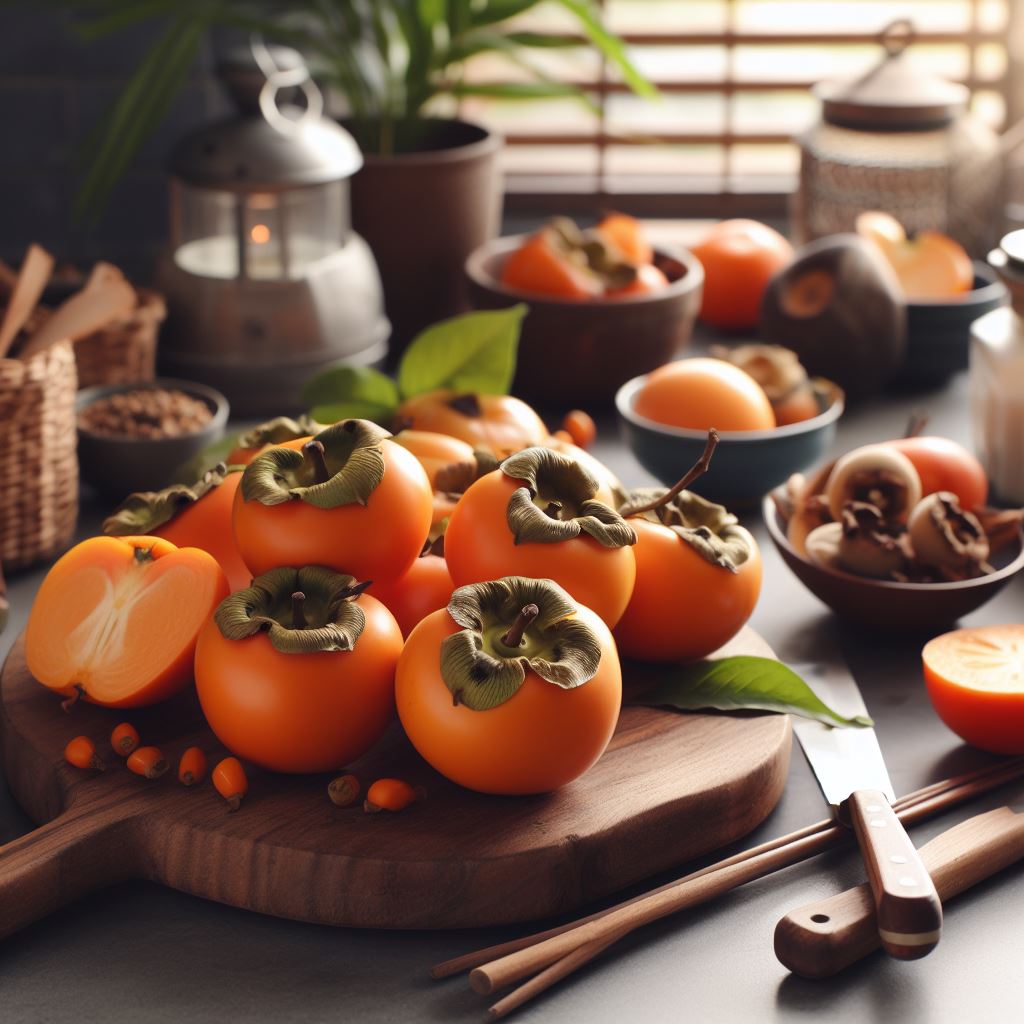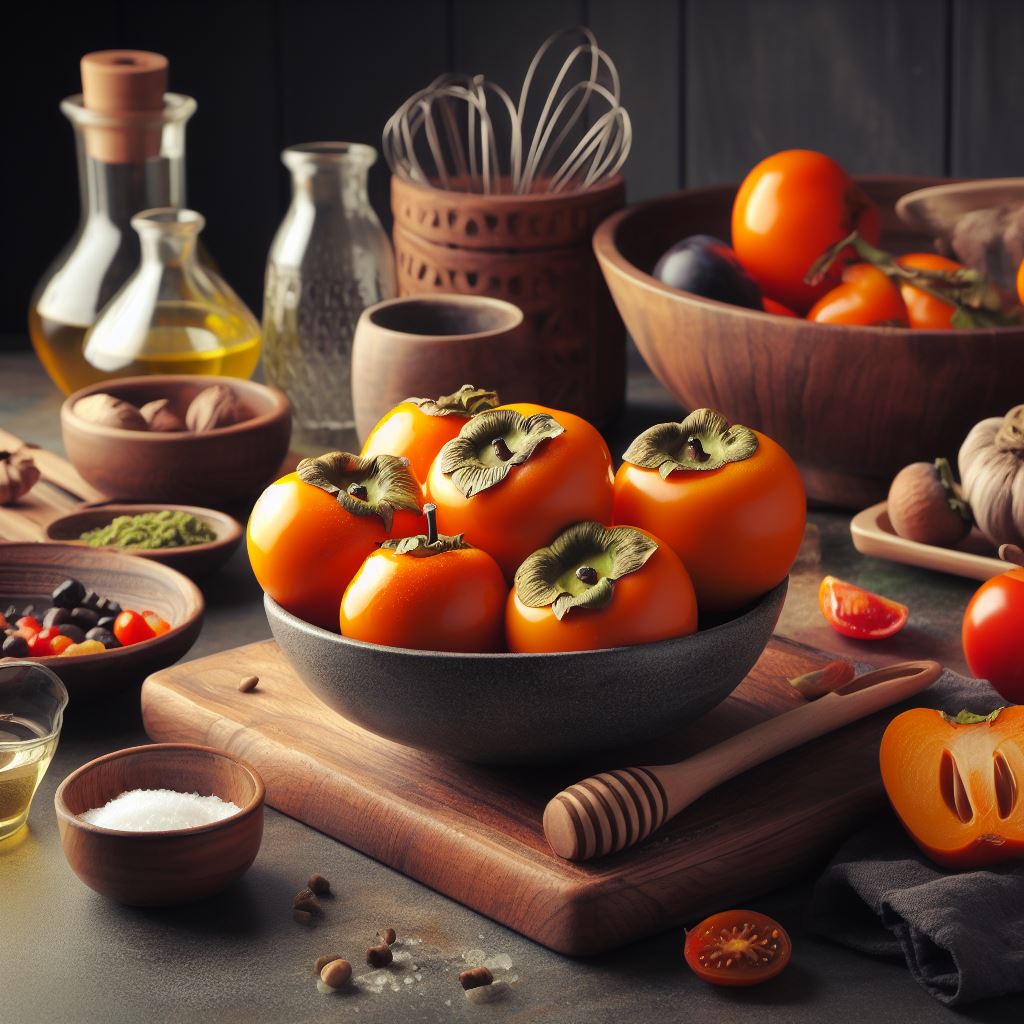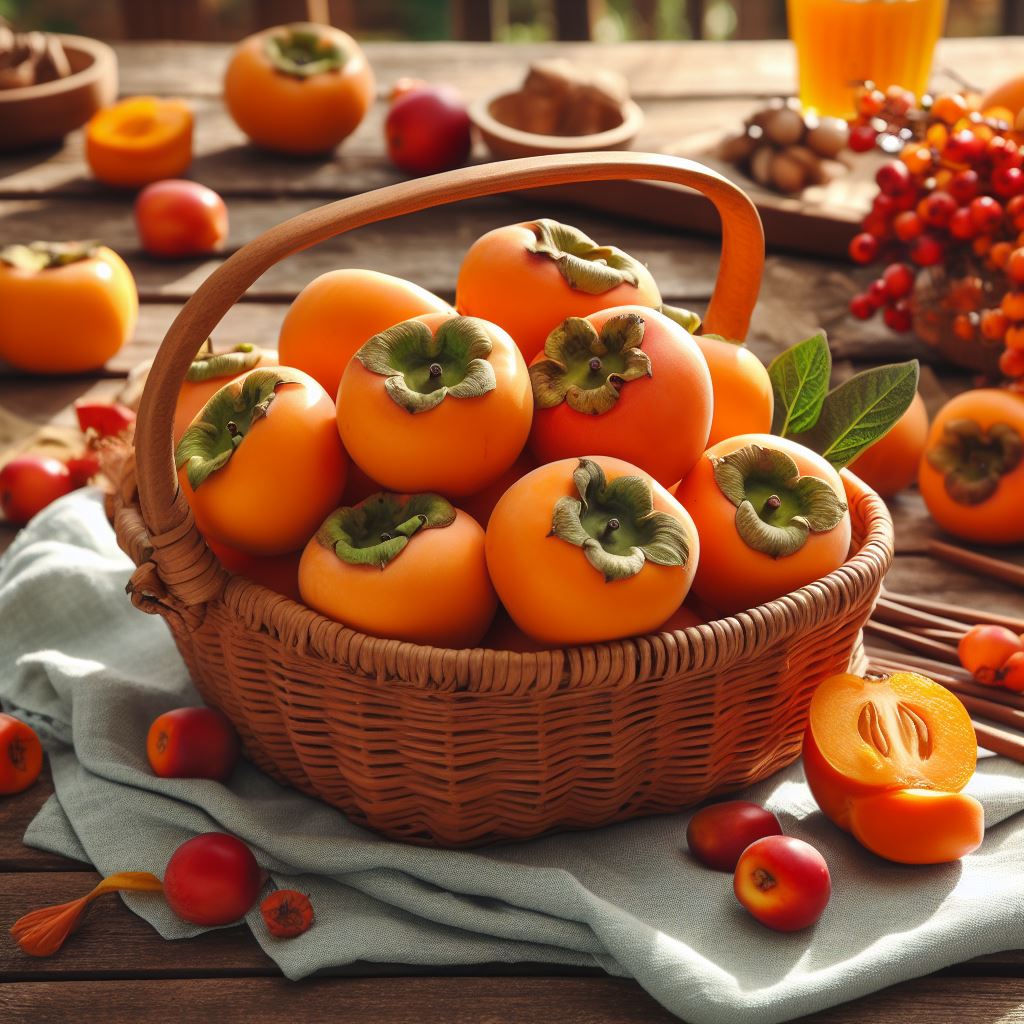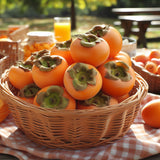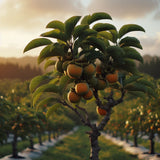Diospyros kaki (Keg Fig, Japanese Persimmon, FUYU Persimmon)
Diospyros kaki (Date Plum, Keg Fig, Japanese Persimmon, FUYU Persimmon) is a fruit-bearing tree that belongs to the Ebenaceae family. This species is native to China but is widely cultivated in Japan, Korea, and other parts of Asia. Japanese Persimmon is known for its delicious, sweet, and juicy fruit, which is enjoyed both fresh and in various culinary preparations. Here are some key characteristics and information about Diospyros kaki:
Tree Description: Japanese Persimmon is a deciduous tree that can reach a height of 20 to 30 feet (6 to 9 meters) when mature. It typically has a rounded or spreading canopy with dark green, elliptical leaves.
Fruit: The fruit of Diospyros kaki is the main attraction. The ripe fruit is typically orange to reddish-orange and has a smooth, thin skin. It is typically medium to large in size, with a shape that can be round, oval, or acorn-like. The flesh is sweet, juicy, and has a unique flavor. Depending on the variety, the texture can range from firm and crisp to soft and jelly-like
Ripening: Japanese Persimmons have two main types based on their ripening characteristics: astringent and non-astringent. Astringent varieties, like 'Hachiya,' are extremely tart and astringent when not fully ripe, but they become sweet and non-astringent when fully ripe and soft. Non-astringent varieties, like 'Fuyu,' are sweet and non-astringent even when firm.
Harvesting: The timing of harvesting depends on the variety. Astringent varieties should be allowed to ripen fully on the tree until they are soft and have a jelly-like texture. Non-astringent varieties can be harvested when they are still firm and fully colored.
Culinary Use: Japanese Persimmons can be eaten fresh, sliced, or diced. They are often used in salads, desserts, and fruit compotes. In Asian cuisine, they are also dried to make dried persimmons, which are a sweet and chewy snack.
Sunlight: Japanese Persimmon trees thrive in full sun, which is essential for fruit development and ripening.
Soil Requirements: Well-draining soil with good fertility is ideal for Japanese Persimmons. They can tolerate a range of soil types but prefer slightly acidic to neutral soil.
Hardiness: The hardiness of Diospyros kaki depends on the cultivar and local climate. Some varieties are more cold-tolerant than others. In general, they are suited for USDA Hardiness Zones 7 to 10.
In summary, Diospyros kaki, or Japanese Persimmon, is a fruit-bearing tree known for its delicious and sweet fruit. It is a popular choice for home gardeners and fruit enthusiasts due to its flavorful harvest. Depending on the variety, it can be grown in various climates and provides a delightful addition to both fresh and cooked dishes.
Botanical Name : Diospyros kaki
Common Name : Date Plum, Keg Fig, Japanese Persimmon, FUYU Persimmon
Height : 20-30 ft
Spread : 10-20 ft
Germination Info : Seed requires 60-90 days cold moist stratification.
Hardiness zone : 7+
Average seed per ounce : Approx. 75

